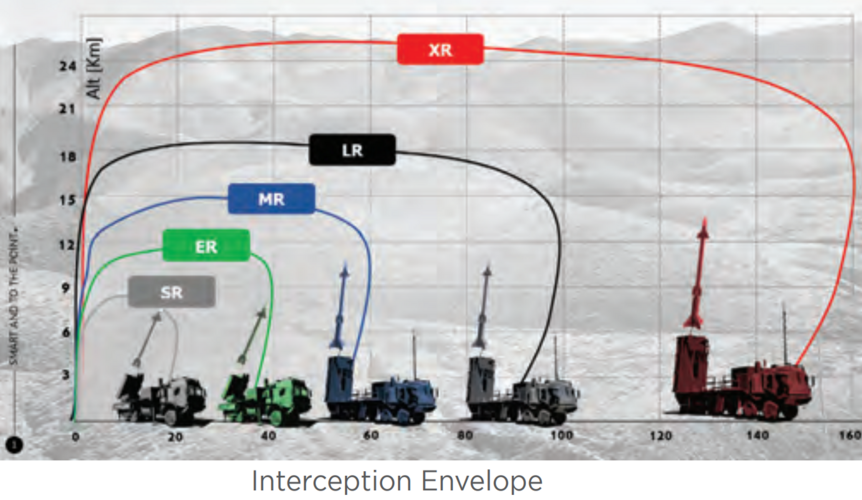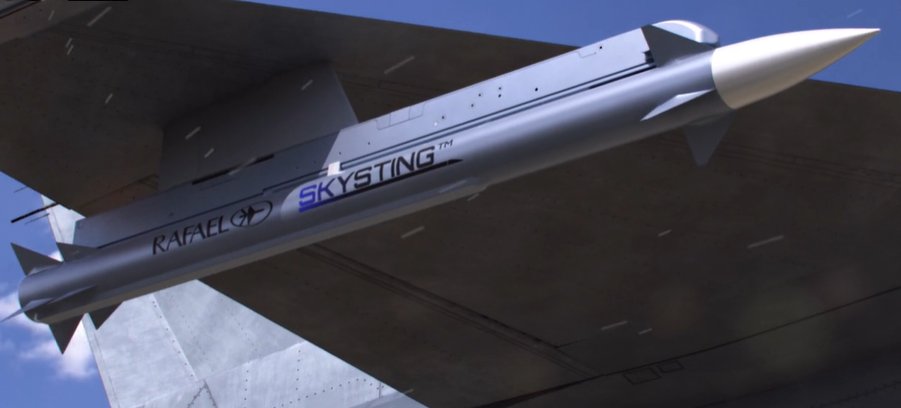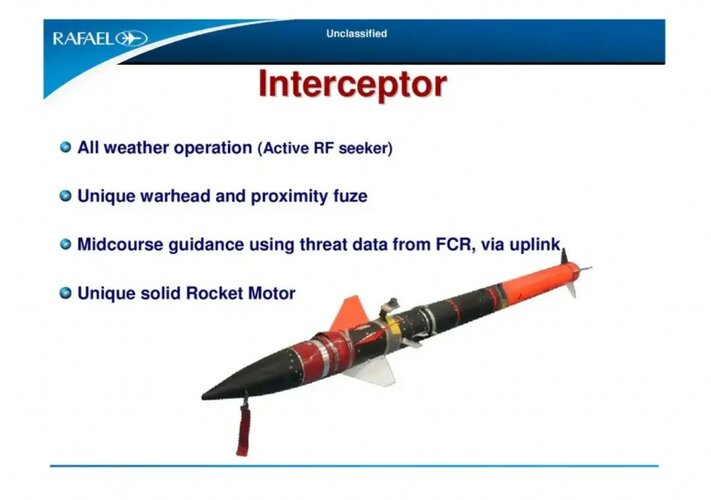Big_Zukini
ACCESS: Confidential
- Joined
- 23 November 2024
- Messages
- 164
- Reaction score
- 228
In 2023 Israeli company Rafael unveiled the SkySting. First named SkySpear but quickly renamed.
Product page here.
Rafael makes several claims:

I also know the IAF at least tested an air launched Stunner missile.

What I'm wondering about is how the SkySting achieved its characteristics, why was the Stunner AAM seemingly abandoned, and generally about AAMs today.
Stunner is a hit to kill missile. On SkySting's page we hear nothing about the kill mechanism. The word "warhead" is not mentioned, nor "kinetic" or "hit to kill".
In the image below I don't see any strakes that could increase its lift. Instead it has 3 sets of 4 fins. Minor departure from the Derby's long tail fins into a pair of smaller ones.
I guess their drag could be reduced via clever flight path. So the main range improvement must come from the different motor. But it still doesn't sit well with the present vector to remove control surfaces.

Product page here.
Rafael makes several claims:
- It's a 6th gen missile.
- Leap in RF seeker capabilities.
- 3 pulse motor instead of 2 pulse.
- Significant range increase (and "very long range").
- Extra aerodynamic lift(?)
- Could be me misreading it.
- Short range and long range suitability.

I also know the IAF at least tested an air launched Stunner missile.

What I'm wondering about is how the SkySting achieved its characteristics, why was the Stunner AAM seemingly abandoned, and generally about AAMs today.
Stunner is a hit to kill missile. On SkySting's page we hear nothing about the kill mechanism. The word "warhead" is not mentioned, nor "kinetic" or "hit to kill".
In the image below I don't see any strakes that could increase its lift. Instead it has 3 sets of 4 fins. Minor departure from the Derby's long tail fins into a pair of smaller ones.
I guess their drag could be reduced via clever flight path. So the main range improvement must come from the different motor. But it still doesn't sit well with the present vector to remove control surfaces.
- What does it mean to switch from 2 pulse to 3 pulse motor (in similar form factor)?
- Is it easy? Or does it require certain tech that makes it more expensive?
- What are its drawbacks?
- What could the SkySting's underbody protrusion be?
- It runs nearly along the entire body but it doesn't seem to have an opening.
- Could it indicate motor length?
- Stunner has a combined RF+EO seeker. SkySting only has RF seeker.
- Is there a known inherent issue with combined seekers?
- Rafael's advertising "hit before enemy can launch" indicates high speed. Could that be a limiting factor for EO?

Last edited:

